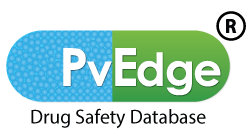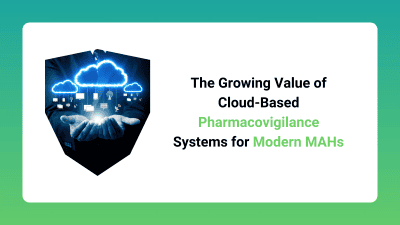Why MAHs Are Turning to Cloud-Based Pharmacovigilance Systems
Marketing Authorisation Holders (MAHs) operate in an increasingly complex regulatory environment, with global case reporting, literature monitoring, and signal detection challenges. Traditional on-premise systems can struggle with scalability, data accessibility, and integration across regions. Cloud-based pharmacovigilance systems provide a modern solution, offering flexibility, efficiency, and enhanced regulatory compliance for MAHs managing global PV operations.
Key Advantages of Cloud-Based Pharmacovigilance Systems
Enhanced Data Accessibility
Cloud platforms allow authorised PV teams to access case data and reports anytime, anywhere. This ensures that global MAH offices and affiliates have real-time visibility into safety data, reducing delays in decision-making and regulatory submissions.
Improved Regulatory Compliance
Cloud-based pharmacovigilance systems are designed to comply with major global regulations, including FDA 21 CFR Part 11, EU GVP, and ICH guidelines. Automated audit trails, version control, and secure data storage ensure that MAHs can demonstrate compliance at all times.
Scalability for Growing PV Workloads
Global operations generate large volumes of safety data. Cloud systems can scale seamlessly to accommodate increasing case loads, new markets, or additional regulatory requirements, without the limitations of traditional IT infrastructure.
Cost Efficiency and Resource Optimisation
By reducing the need for on-premise servers, maintenance, and manual data handling, cloud-based PV platforms lower operational costs. MAHs can allocate resources to higher-value activities such as signal detection, risk management, and strategic safety initiatives.
How Cloud-Based Pharmacovigilance Systems Streamline Operations
Centralised Case Management
Cloud platforms consolidate data from multiple sources — including CROs, local affiliates, and literature monitoring — into a single repository. This simplifies tracking, evaluation, and reporting.
Automated Workflows
Routine tasks such as case triage, report generation, and compliance checks can be automated. Cloud-based pharmacovigilance systems reduce manual errors and improve processing times, enabling MAHs to meet stringent regulatory deadlines more efficiently.
Real-Time Analytics and Dashboards
Advanced dashboards provide insights into case trends, workload distribution, and compliance metrics. MAHs can use these analytics to proactively manage safety signals, identify bottlenecks, and optimise PV performance.
Addressing Challenges with Cloud-Based Pharmacovigilance Systems
While cloud platforms offer many benefits, MAHs must carefully manage:
Data Security and Privacy: Ensure cloud providers comply with regulations such as GDPR and HIPAA to protect patient data.
System Validation: Even in the cloud, PV systems require validation to demonstrate consistent, compliant performance.
Integration with Existing Tools: Seamless connection with literature monitoring, case processing, and reporting tools is essential to maintain end-to-end efficiency.
By addressing these challenges, MAHs can fully leverage cloud-based pharmacovigilance systems to improve global PV operations without compromising compliance or data integrity.
Best Practices for MAHs Using Cloud-Based Pharmacovigilance Systems
Centralise SOPs and Processes: Ensure all automated workflows align with company SOPs and regulatory expectations.
Monitor KPIs: Use dashboards to track case processing time, report quality, and regulatory submissions.
Conduct Regular Audits: Even with cloud systems, routine audits confirm adherence to PV standards and data integrity.
Train Staff: Ensure all users understand system functionalities and compliance requirements to maximise efficiency.
Embracing Digital Transformation with Cloud-Based Pharmacovigilance Systems
The pharmacovigilance landscape is evolving rapidly, and MAHs must adapt to stay compliant and efficient. Cloud-based pharmacovigilance systems offer a scalable, secure, and flexible solution that streamlines case management, accelerates reporting, and enhances data accessibility across global operations.
By embracing cloud technology, MAHs can ensure that their PV activities are fully aligned with regulatory expectations, reduce manual workload, and focus on higher-value safety activities. Cloud-based PV platforms are not just a technological upgrade — they are a strategic investment in compliance, efficiency, and the future of pharmacovigilance.



